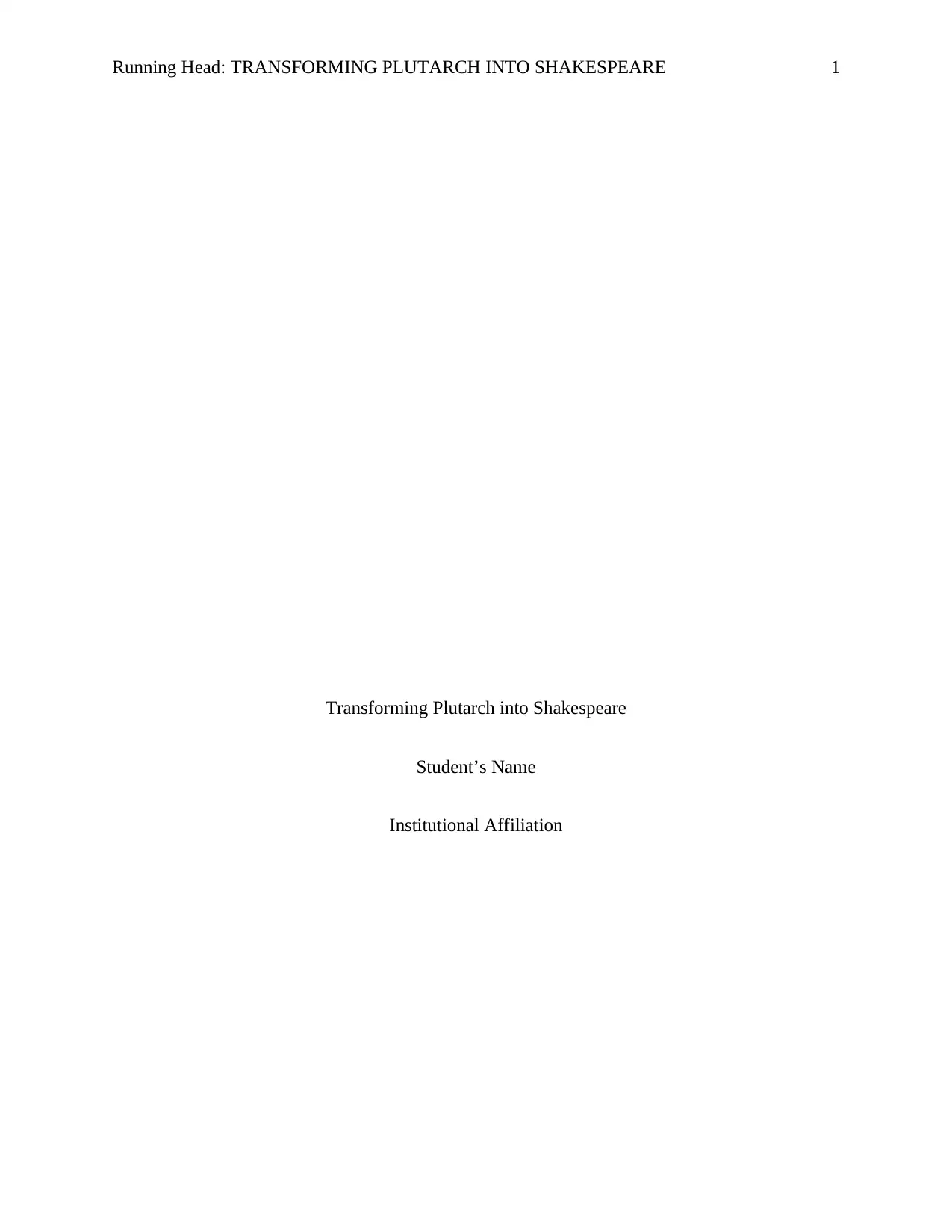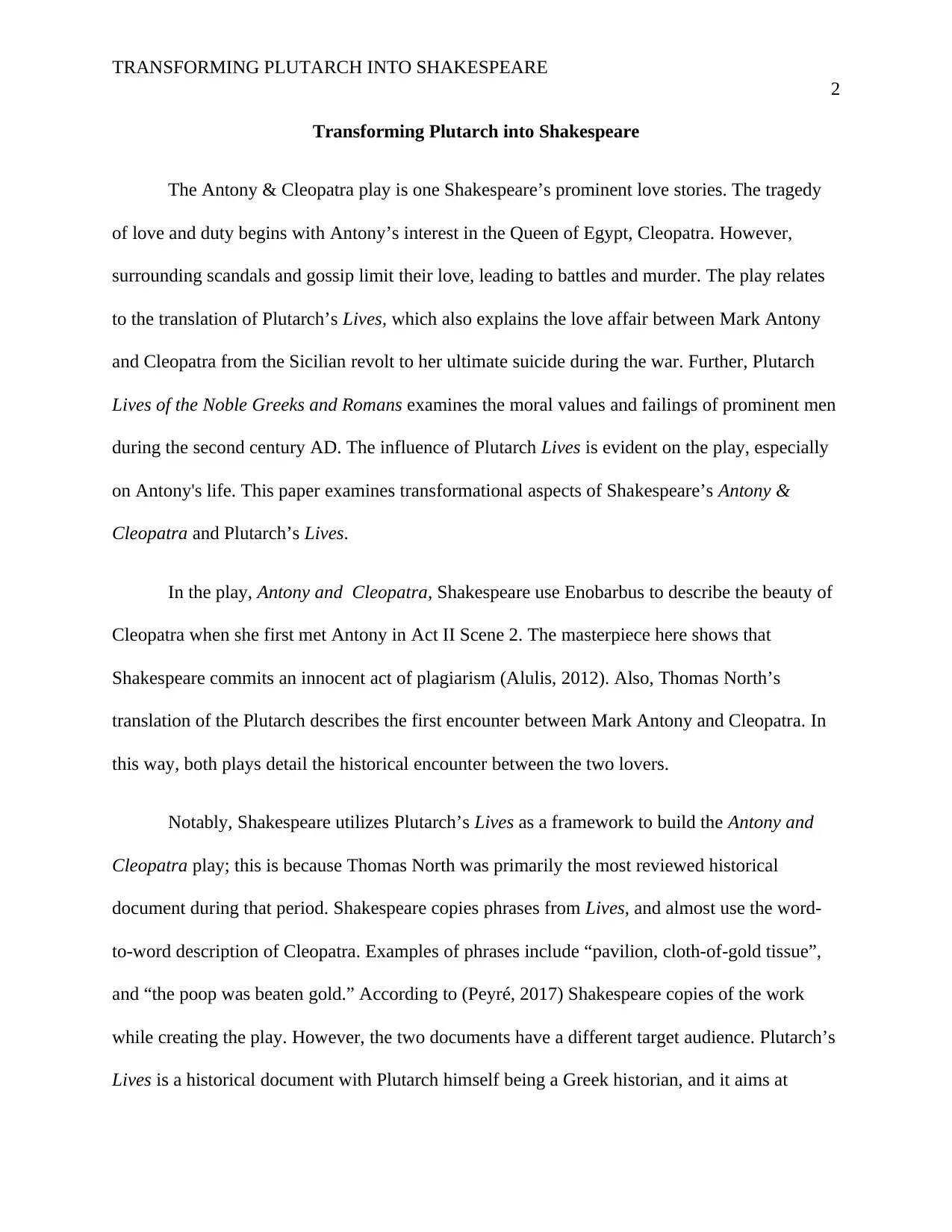Analyzing Transformation: Plutarch's Lives to Shakespeare's Play
VerifiedAdded on 2023/06/12
|4
|733
|211
Essay
AI Summary
This essay examines the transformational aspects of Shakespeare’s Antony & Cleopatra and Plutarch’s Lives, focusing on how Shakespeare utilized Plutarch’s historical account as a framework for his play. The analysis highlights similarities in describing Cleopatra's beauty and the use of personification. Shakespeare's play, while drawing heavily from Thomas North's translation of Plutarch's Lives, targets a broader, less literate audience, aiming to educate on relevant issues. The essay also acknowledges Shakespeare's 'innocent plagiarism' of phrases and concepts from Plutarch, ultimately transforming the historical narrative into a romantic and human portrayal of Marc Antony and Cleopatra's rise and fall. Desklib provides access to similar solved assignments and study resources.
1 out of 4





![[object Object]](/_next/static/media/star-bottom.7253800d.svg)